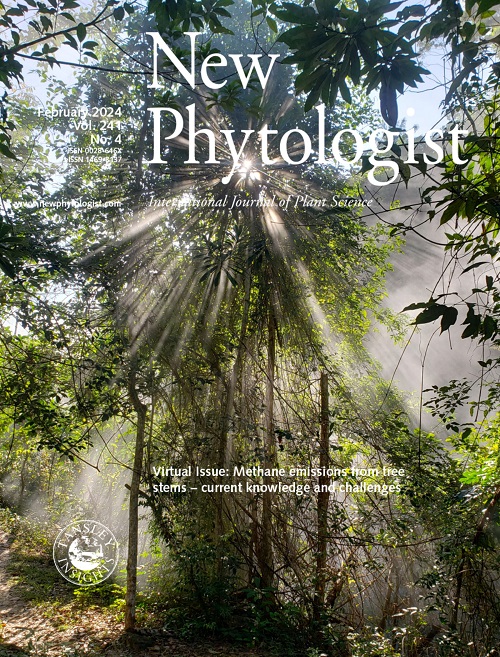几十年的土壤变暖通过诱导氮限制降低了亚北极草原地下和地上维管植物的产量
IF 8.1
1区 生物学
Q1 Agricultural and Biological Sciences
引用次数: 0
摘要
地下和地上植被动态对于理解气候变暖如何影响陆地生态系统碳循环至关重要。与地上生物量相比,地下生物量对长期变暖的反应研究较少。在这里,我们描述了两个水平(平均+3.3°C和+7.9°C)的十年期地热变暖对亚北极草原地上和地下植物生物量储量和产量的影响。土壤变暖不会改变立根生物量,甚至会降低细根产量,降低地上生物量和产量。几十年的土壤变暖也没有显著改变根冠比。线性逐步回归模型表明 随着土壤变暖,温度不再是这些反应的直接驱动因素,但土壤氮的损失是。由于气候变暖导致有机质和保水能力下降,土壤氮损失被认为是地上和地下产量下降的关键驱动因素。细根产量的减少伴随着比根面积增加的细根。这些结果表明,经过十年的土壤变暖,所研究的亚北极草原的植物生产力受到土壤变暖的影响,主要是土壤氮的减少。本文章由计算机程序翻译,如有差异,请以英文原文为准。
Decadal soil warming decreased vascular plant above and belowground production in a subarctic grassland by inducing nitrogen limitation
- Below and aboveground vegetation dynamics are crucial in understanding how climate warming may affect terrestrial ecosystem carbon cycling. In contrast to aboveground biomass, the response of belowground biomass to long-term warming has been poorly studied.
- Here, we characterized the impacts of decadal geothermal warming at two levels (on average +3.3°C and +7.9°C) on below and aboveground plant biomass stocks and production in a subarctic grassland.
- Soil warming did not change standing root biomass and even decreased fine root production and reduced aboveground biomass and production. Decadal soil warming also did not significantly alter the root–shoot ratio. The linear stepwise regression model suggested that following 10 yr of soil warming, temperature was no longer the direct driver of these responses, but losses of soil N were. Soil N losses, due to warming-induced decreases in organic matter and water retention capacity, were identified as key driver of the decreased above and belowground production. The reduction in fine root production was accompanied by thinner roots with increased specific root area.
- These results indicate that after a decade of soil warming, plant productivity in the studied subarctic grassland was affected by soil warming mainly by the reduction in soil N.
求助全文
通过发布文献求助,成功后即可免费获取论文全文。
去求助
来源期刊

New Phytologist
PLANT SCIENCES-
CiteScore
17.60
自引率
5.30%
发文量
728
审稿时长
1 months
期刊介绍:
New Phytologist is a leading publication that showcases exceptional and groundbreaking research in plant science and its practical applications. With a focus on five distinct sections - Physiology & Development, Environment, Interaction, Evolution, and Transformative Plant Biotechnology - the journal covers a wide array of topics ranging from cellular processes to the impact of global environmental changes. We encourage the use of interdisciplinary approaches, and our content is structured to reflect this. Our journal acknowledges the diverse techniques employed in plant science, including molecular and cell biology, functional genomics, modeling, and system-based approaches, across various subfields.
 求助内容:
求助内容: 应助结果提醒方式:
应助结果提醒方式:


